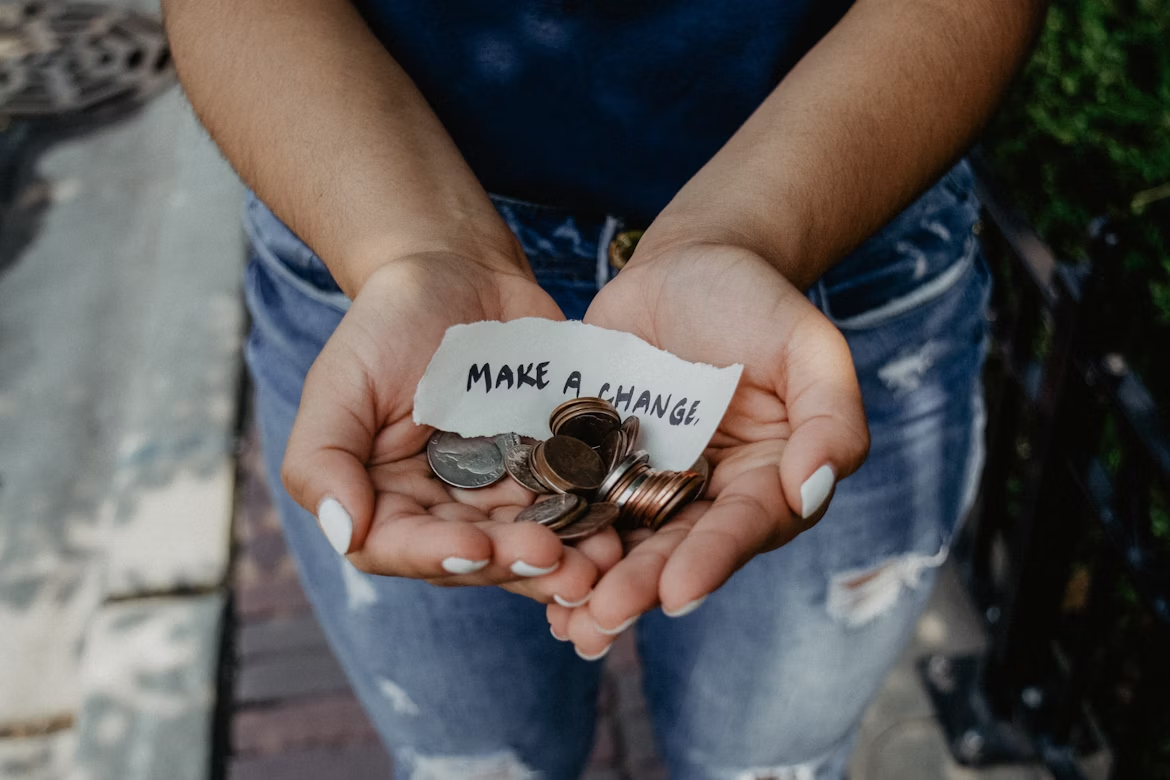Giving back doesn’t always require a grand gesture or a hefty bank account. Across communities, people are discovering the value of consistent contributions through time, resources, or simple acts of kindness. Although the traditional model of large donations often first comes to mind when considering philanthropy, a more inclusive, everyday practice that welcomes anyone willing to help is an opportunity to make tremendous positive impacts.
By choosing causes that resonate personally and involving others in the process, their impact can be amplified. Small actions, when added together, create powerful ripples of change. Whether it’s helping a neighbor, supporting a nonprofit, or contributing unused items, the heart of donating lies in intention and persistence. Dr. Ann Marie Egloff offers a look at how anyone can start small, stay committed, and inspire others to join in building a stronger, more connected world.
Photo Credit: https://unsplash.com/photos/person-showing-both-hands-with-make-a-change-note-and-coins-K0E6E0a0R3A
Table of Contents
The Power of Philanthropic Gestures
Small philanthropic gestures are often underestimated, yet they can create ripple effects far beyond their initial scope. A single act, like donating a meal or covering someone’s bus fare, can spark a chain of goodwill that spreads through communities. These moments of generosity don’t require large sums of money or elaborate planning.
Across the country, people are embracing everyday giving. Neighbors set up free community pantries, children run lemonade stands to support local shelters, and office teams pool spare change to help families in need. In each case, the impact grows as more people pitch in. These efforts prove that small, consistent actions, especially when shared by many, can lead to meaningful social change.
Rethinking Philanthropy
Philanthropy is often associated with million-dollar checks and high-profile charity galas, but real impact doesn’t always come from grandeur. Many people mistakenly believe they need wealth to make a difference, when in reality, giving time, offering skills, or making a small recurring donation can be just as powerful. A retired teacher tutoring kids after school or a college student designing a nonprofit’s website are strong examples of meaningful contributions. These contributions reflect how personal talents can be repurposed to serve the greater good.
Smaller efforts often deepen community connection. A weekly visit to a senior neighbor or helping a local food bank sort donations builds trust and shows that generosity isn’t about scale, it’s about care. These acts may not make headlines, but they’re often the most memorable to those who receive them.
Simple Ways to Get Involved
Dr. Ann Marie Egloff explains that getting involved doesn’t have to be complicated. Lending a hand at a neighborhood clean-up or reading books to children at the library can have a lasting effect. Many people begin with something familiar and local, which makes it easier to stay engaged. When people start with what they know, they’re more likely to make it a habit.
With today’s technology, giving has never been more accessible. Apps allow users to round up purchases and donate the spare change, while websites connect donors directly with small organizations that need help. Even sharing a meal with someone experiencing homelessness can be a meaningful moment of connection.
Choosing the Right Cause
Finding a cause that aligns with your values makes giving feel more personal and sustainable. Whether it’s animal welfare, education, or environmental protection, connecting with a mission that resonates increases your motivation to stay involved. Many people start with what touches their daily lives, an illness a loved one faces, a school in the neighborhood, or an issue they’ve seen up close.
Research plays a key role in choosing where to give. Transparent organizations often share impact reports, testimonials, and clear goals. Taking time to explore their track record and how they use donations can help build confidence and trust. It also ensures your contribution supports work that creates measurable change. Striking a balance between local and global causes can also help give your efforts a personal and far-reaching effect. Exploring volunteer review platforms or attending virtual events can also provide helpful insights.
Inspiring Others to Join You
When people share their giving stories with friends or co-workers, it often encourages others to take part. A simple social media post about a volunteer day or a photo from a community fundraiser can spark interest and inspire action. Giving becomes more contagious when it’s visible and celebrated. Sharing how giving has impacted your own life can be a powerful motivator.
Some individuals get creative by organizing small donation drives or suggesting charitable gifts during holidays. Others form giving circles, where each person contributes a little and then decides together where to donate. These shared efforts create a sense of purpose and connection that keeps people coming back. It also adds a social dimension to giving that can make the experience more rewarding.
Being Consistent
Dr. Ann Marie Egloff notes that consistency is key to long-term impact. Whether it’s setting aside time each month to volunteer or automating a small donation, building a habit around generosity helps it become a natural part of life. People often find that scheduling their efforts like choosing the first Saturday of every month, makes the commitment easier to keep. Celebrating milestones, no matter how small, can help reinforce long-term engagement.











